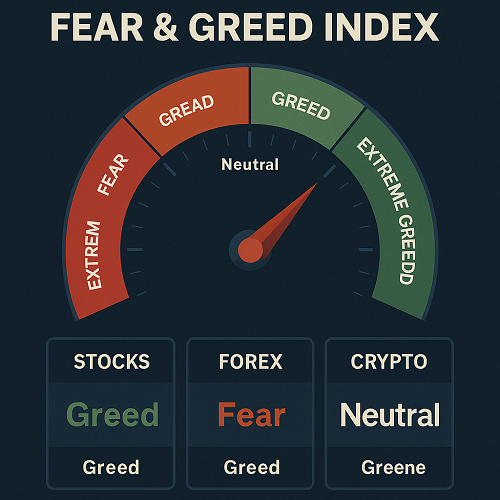Baidu, Inc. (NASDAQ: BIDU) — often called the “Google of China” — was once the unchallenged leader of China’s online search and advertising industry. But as the global tech landscape evolved, Baidu has been undergoing a dramatic transformation, pivoting toward artificial intelligence (AI), cloud computing, and autonomous driving.
As of November 2025, BIDU trades near $120 per share, representing a sharp discount from its historical highs. For investors, the central question is simple: Is Baidu’s AI-driven reinvention a smart long-term opportunity — or a value trap in disguise?
This analysis explores Baidu’s business model, financial performance, growth drivers, risks, valuation, and investment outlook in 2025.
Company Overview
Founded in 2000 by Robin Li and Eric Xu, Baidu rose to dominate Chinese internet search, capturing roughly 70–80% of the domestic search market. Over two decades, it evolved from a pure search platform into an expansive tech ecosystem — spanning AI, cloud, autonomous vehicles, and digital advertising.
Key Facts
- Headquarters: Beijing, China
- Founded: 2000
- Ticker: BIDU (NASDAQ)
- CEO: Robin Li
- Market Cap (Nov 2025): ~$42 billion
- Employees: ~41,000
Baidu’s identity today is increasingly defined not by search, but by artificial intelligence — specifically its Ernie AI platform and its Apollo Go autonomous driving network.
Business Model Breakdown
1. Online Marketing (Search Advertising)
This remains Baidu’s core revenue driver, contributing roughly 50% of total sales in 2025. Through its flagship Baidu App, mobile search, and AI-enhanced advertising, the company monetizes billions of monthly queries from 735 million users.
However, this segment has struggled amid:
- China’s slower economic growth,
- Tightening digital ad budgets,
- Competition from short-video platforms like Douyin (TikTok China) and Kuaishou.
In 2025, online marketing revenue fell about 15% year-over-year to around RMB 16 billion (~US $2.2 billion).
2. Non-Online Marketing (“New Business”)
This is Baidu’s growth engine — comprising AI Cloud, enterprise services, autonomous driving, and video platforms.
- AI Cloud: Powers business solutions for manufacturing, healthcare, and government clients. Revenue surpassed RMB 10 billion in Q2 2025, up 34% YoY.
- Autonomous Driving (Apollo Go): Baidu operates one of China’s largest robotaxi networks — delivering 2.2 million fully driverless rides in Q2 2025, a 148% YoY increase.
- Ernie Bot (Generative AI): Baidu’s large language model rivaling ChatGPT. Integrated across Baidu Search, Maps, and Cloud, it boosts engagement and data monetization.
Together, these new segments are transforming Baidu from an ad-dependent search firm into a diversified AI powerhouse.
Financial Performance
Q2 2025 Snapshot
| Metric | Result | YoY Change |
|---|---|---|
| Total Revenue | RMB 32.7 billion (~US $4.6 billion) | -4 % |
| Non-Online Marketing Revenue | RMB 10 billion | +34 % |
| Online Marketing Revenue | RMB 16.2 billion | -15 % |
| Apollo Go Rides | 2.2 million | +148 % |
| Baidu App MAUs | 735 million | +5 % |
Interpretation
- Advertising weakness offset robust AI/Cloud growth.
- Operating margins compressed due to heavy R&D spending in AI.
- Cash flow remains healthy — Baidu generated over RMB 25 billion in free cash flow in 2024 and maintains a strong balance sheet (net cash > US $15 billion).
- Overall, Baidu’s fundamentals show a transition phase: short-term volatility, but strong potential long-term upside.
Key Growth Drivers
1. Artificial Intelligence (Ernie Bot & AI Cloud)
Baidu’s AI platform, Ernie Bot, is among China’s most advanced large language models. It supports text, image, and video generation, powering:
- Search results,
- Enterprise AI services,
- Customer-service chatbots,
- AI-driven advertising optimization.
China’s state-backed push for AI independence gives Baidu a first-mover advantage, positioning it as a national AI champion.
2. Autonomous Driving & Mobility
Baidu’s Apollo Go service now operates in over 10 Chinese cities, including Beijing, Wuhan, and Chongqing. With millions of paid rides completed, Baidu is:
- Licensing technology to automakers,
- Expanding its robotaxi fleet,
- Testing monetization models (ride fares, data licensing).
If the business scales successfully, Apollo Go could evolve into China’s first profitable driverless mobility platform.
3. Cloud & Enterprise Digitalization
Baidu AI Cloud leverages the company’s proprietary chips (Kunlun AI processors) and AI models to deliver cloud computing and data analytics for Chinese enterprises.
As China digitizes manufacturing, healthcare, and government systems, Baidu is well placed to capture long-term enterprise AI spending.
4. Search Modernization & AI Integration
AI-generated results now appear in over 50% of Baidu’s mobile search queries. By integrating Ernie AI directly into its ecosystem, Baidu aims to rebuild engagement and capture higher-value ad impressions — blending AI search, e-commerce, and voice interfaces.
Risks & Headwinds
| Risk | Explanation |
|---|---|
| Advertising Slump | China’s weak consumer demand continues to depress ad budgets. |
| Regulatory Scrutiny | Tight oversight of Chinese tech firms could limit data use and overseas expansion. |
| Monetization Uncertainty | AI and autonomous driving require heavy R&D before yielding profits. |
| Competition | Alibaba Cloud, Tencent, Huawei, and ByteDance aggressively compete in AI and cloud. |
| Geopolitical Tensions | US-China relations, delisting fears, and export controls may affect investor confidence. |
| Currency Volatility | Yuan fluctuations impact ADR valuations. |
In short, Baidu’s upside is substantial — but so are the variables outside its control.
Valuation Analysis
| Metric | Value (2025 Est.) | Peer Comparison |
|---|---|---|
| P/E Ratio | ~11× 2025 EPS | vs Alphabet ~22× |
| Price-to-Sales | ~2.2× | vs Alibaba ~2.0× |
| Free Cash Flow Yield | ~9 % | vs Tencent ~6 % |
| Revenue Growth 2025 | ~-2 % expected | vs Alphabet +10 % |
Interpretation:
Baidu trades at deep-value multiples compared with Western peers, reflecting China risk and earnings uncertainty. Yet, if AI and Cloud scale profitably, valuation rerating potential is significant.
Technical Outlook
As of November 2025, BIDU is consolidating near $120, down roughly 40% from its 2021 highs, but above its 2024 lows.
- Support Levels: $110 and $98 (2024 lows).
- Resistance: $135 and $150 (200-day moving average).
- Momentum: Neutral-to-slightly bearish in the short term.
For investors, these technicals suggest an accumulation zone for long-term positions, provided macro sentiment stabilizes.
Investor Sentiment
Investor mood toward Chinese tech stocks remains cautious. US investors worry about regulation and delisting risk; domestic sentiment is improving slightly as Beijing signals more pro-growth policies.
Institutional ownership of BIDU remains relatively low — meaning any positive catalyst (earnings beat, AI milestone, policy support) could spark outsized upside momentum.
Investment Outlook & Strategy
Bull Case (12–36 Months)
- AI Cloud and Ernie Bot adoption accelerate.
- Robotaxi business monetizes successfully.
- Chinese ad market stabilizes.
- Stock re-rates to ~18× earnings, implying a target near $190–200 USD.
Base Case
- Moderate AI/Cloud growth offsets ad declines; valuation remains subdued.
- Price range: $120–140 USD.
Bear Case
- Persistent macro weakness, regulatory setbacks, or AI monetization delays.
- Stock revisits $95–100 USD support zone.
Should You Buy Baidu Stock in 2025?
Baidu today resembles a maturing tech company undergoing reinvention. Its transformation from advertising to AI & mobility makes it both exciting and uncertain.
Pros
- Leader in China’s AI ecosystem.
- Growing Cloud and autonomous driving segments.
- Attractive valuation and strong balance sheet.
- Government backing for AI development.
Cons
- Declining core ad business.
- Heavy capital requirements for AI and mobility.
- Regulatory and geopolitical risk.
- Limited visibility on profit recovery timeline.
Verdict
- Rating: Hold / Buy (Selective)
- Ideal Investor: Long-term, risk-tolerant growth investors.
- Investment Horizon: 3–5 years.
Baidu could emerge as China’s next AI superpower — but patience and risk management are essential.
Frequently Asked Questions
1. Is Baidu a good AI stock to buy in 2025?
Yes, for long-term investors. Its AI leadership (Ernie Bot, AI Cloud) provides real potential, though near-term earnings may stay volatile.
2. How risky is Baidu’s stock?
Moderate-to-high. Investors face both company-specific and geopolitical risk. Diversification is key.
3. Will Baidu’s autonomous driving become profitable?
Not immediately. Apollo Go is scaling fast, but commercial viability depends on regulation and unit economics.
4. Why is Baidu undervalued compared with Google?
Discount stems from China-specific risks and weaker short-term growth. However, the valuation gap may narrow if AI revenues accelerate.
5. What’s the long-term forecast for BIDU?
Analysts’ median 12-month target (as of late 2025) is around $170, assuming gradual ad recovery and AI momentum.
Final Thoughts
Baidu stands at a crossroads. Once a pure-search titan, it is now a leading contender in AI, Cloud, and autonomous mobility — fields that will shape China’s digital economy for the next decade.
The company’s transformation is impressive but incomplete. Investors willing to embrace volatility and think long term may find substantial value here. Others should watch from the sidelines until earnings visibility improves.





 XAUT-USD
XAUT-USD  AMD
AMD  MARA
MARA  SHOP
SHOP  BULL
BULL  CL=F
CL=F